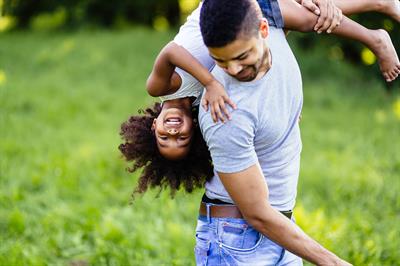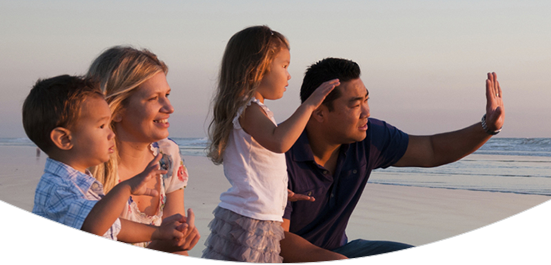
So when kids wrestle, pillow fight, and roughhouse, it's terrific for them. But it isn't always so good for our houses. And parents often worry that sooner or later, someone will get hurt.
Luckily, we can usually find a way to keep things safe. But that takes some attention on our part, and some teaching, over time. We can't just hope for the best; we need to help our children learn how to roughhouse safely. It's our job to notice when our kids are getting riled up in a way that signals danger, and give them the tools to stay safe. Here's how.
1. If you need to intervene, do it BEFORE you get angry.
The minute you start getting worried that someone will get hurt, it’s a signal to do something. No, not yell. It’s time to intervene in a positive way to make sure things are safe. Many parents try so hard to be patient that they let things get out of hand. Next thing you know, someone's crying, and someone (you!) is yelling. That's not the emotional regulation you want to model.
2. Assess the danger.
Is it actually dangerous? Maybe the kids are being loud and exuberant, but having a great time and there's no actual danger to anyone, or to your home. Or maybe a small change would make a difference, like moving the bed closer to the dresser so they can jump onto the bed safely. Maybe your children are having a throwing contest with blocks, but you can substitute stuffed animals.
3. Connect before you correct.
Yelling across the room will just add to the frenzy. Instead, go physically to your children. When a child is spinning out of control, you can't get through to her unless you move in close in a friendly way. Make a positive connection with your child BEFORE you ask her to do something different. “You two are having lots of fun with this rough-housing, aren’t you?”
4. Set Limits.
State your rule or expectation, firmly and kindly. “This kind of play doesn't belong in this room. I’m worried that you might roll into the lamp or the TV.”
5. Empathize as you offer an alternative, and maybe a choice.
"I know it's hard to stop, but this kind of play belongs in the basement on the tumbling mat, or outside. Your choice. Outside? Deal!"
6. Check in with all participants to be sure everyone is enjoying the activity
.
"Is everyone still having fun with this?" If one of your kids is getting into a frenzy and the other seems a bit tense, you can help them check in with each other. "Jaden, do you see that your brother isn't laughing? Let's stop for a minute and be sure everyone feels safe....Liam, you can tell Jaden to stop whenever you want. Do you want to practice it, right now?"
7. Help kids create safety rules.
If you're worried that someone's about to get hurt, try to resist just shutting down the action out of your own anxiety. Instead, help your kids make rules to keep everyone safe: "Play wrestling is great, as long as you have rules to stay safe. What are your rules? Oh, when someone yells 'Stop!' both people have to stop? And no hitting? Those sound like great rules! How are they working so far? Do you need any other rules?"
8. Tears aren't the end of the world.
Often, kids do begin to cry when they get a big bump while roughhousing. Sometimes those tears are
appropriate to the injury, and your child is ready to get back into the action after a quick hug from you.
Sometimes, though, kids sob wildly, clearly over-reacting. That's a good thing! No, really. It means all that laughter has loosened up the feelings stuffed in their emotional backpack, and they're taking advantage of this owie to share the deeper wounds they can't verbalize. After a good cry, your child will be so much more relaxed and happy, since those emotions will be released from their "emotional backpack."
So instead of feeling like a bad parent because someone got hurt, relax. Take the opportunity to help your child with his big feelings, and be grateful he got a chance to cry. Afterward, ask both kids if they think they need to add any new rules to keep everyone safer next time. You might want to write the rules down and post them, so you can easily remind them next time they start getting wild. (Written agreements have extra power even for kids who can't read.)
9. Help them wind down.
Sometimes you do need to redirect to a calmer activity. But often when kids are really wound-up, they're about to melt down. If you sense a melt-down brewing, test it by moving in close and setting a limit,"Ok, Bella, time to calm down now. That's enough rowdiness." If she calms down, great! If she bursts into tears, great! Better those feelings should come out by crying in your arms than by her hurting her little brother.
10. Make sure your kids have a safe place to be wild.
Like puppies or bear cubs, kids need to roll around, wrestle, climb and jump. Our modern lives don't always offer them that opportunity. If you don't have a yard, or a basement with a tumbling mat, make their room safe for roughhousing, and make sure they get plenty of playtime at the playground or park. If you don't, your couch will start to look a lot like a trampoline, and your lamps will be living dangerously.
Notice how much easier it is when you set the limit BEFORE you get mad? Just calmly, kindly, cheerfully do whatever is necessary to keep the situation safe, from the start.
But don't over-react and just shut down all exuberant play. Wildness is normal for kids. It's usually not an emergency, even if there are some bumps and bruises. Tears aren't the end of the world. And laughter is always transformative.





